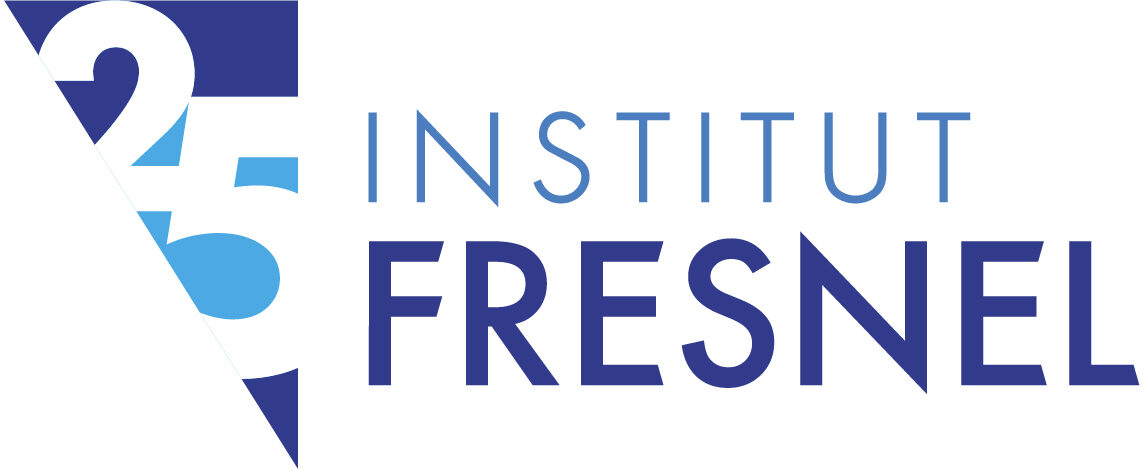La segmentation d’image constitue un des principaux verrous en traitement d’image, en particulier dans le cas d’images fortement bruitées et lorsque l’on cherche à aboutir à des techniques rapides et non supervisées.
Nous avons développé depuis de nombreuses années différents algorithmes de segmentation et de partition d’image en zones homogènes par contours et grilles actifs polygonaux, fondés sur la minimisation de la complexité stochastique (ou MDL pour « Minimum Description Length »).
Ces techniques, rapides et ne nécessitant pas de paramètre à régler dans le critère à optimiser ont été plus particulièrement appliquées aux images bruitées en présence de speckle (SAR, PolInSAR).
Références :
O. Germain and Ph. Réfrégier, Optimal snake-based segmentation of a random luminance target on a spatially disjoint background, Optics Letters, Vol. 21 (22), pp. 1845-1847, 1996.
Ph. Réfrégier, O. Germain and T. Gaidon, Optimal snake segmentation of target and background with independent Gamma density probabilities, application to speckled and preprocessed images, Optics Communications, Vol. 137.4-6, pp. 382-388, 1997.
C. Chesnaud, V. Pagé and Ph. Réfrégier, Improvement in robustness of the statistically independent region snake-based segmentation method of target-shape tracking, Optics letters, Vol. 23(7), pp. 488-490, 1998.
C. Chesnaud, Ph. Refregier, and V. Boulet, Statistical region snake-based segmentation adapted to different physical noise models, IEEE Transactions on Pattern Analysis and Machine Intelligence, Vol. 21(11), pp 1145-1157, 1999.
O. Germain and Ph. Réfrégier, Snake-based method for the segmentation of objects in multichannel images degraded by speckle, Optics letters, Vol. 24(12), pp. 814-816, 1999.
O. Germain, Ph. Réfrégier, Edge location in SAR images : Performance of the likelihood ratio filter and accuracy improvement with an active contour approach, IEEE Transactions on image processing, Vol. 10(1), pp. 72-78, 2001.
O. Germain and Ph. Réfrégier, Statistical active grid for segmentation refinement, Pattern Recognition Letters, Vol. 22(10), pp. 1125-1132, 2001
O. Ruch and Ph. Réfrégier, Minimal-complexity segmentation with a polygonal snake adapted to different optical noise models, Optics Letters, Vol. 26 (13), pp. 977-979, 2001
F. Goudail and Ph. Réfrégier, Target segmentation in active polarimetric images by use of statistical active contours, Applied optics, Vol. 41 (5), pp. 874-883, 2002.
F. Galland, N. Bertaux and Ph. Réfrégier, Minimum Description Length Synthetic Aperture Radar image segmentation, in IEEE Transactions on Image Processing, Vol. 12 (9), pp. 995-1006, 2003.
F. Galland, Ph. Réfrégier and O. Germain, Synthetic Aperture Radar oil spill segmentation by stochastic complexity minimization, in IEEE Geoscience and Remote Sensing Letters, Vol. 1 (4), pp. 295-299, 2004.
F. Galland and Ph. Réfrégier, Information theory-based snake adapted to multi-region objects with different noise models, in Optics Letters, Vol. 29 (14), pp. 1611-1613, 2004.
P. Martin, Ph. Réfrégier, F. Goudail, and F. Guérault, Influence of the noise model on level set active contour segmentation. » IEEE Transactions on Pattern Analysis and Machine Intelligence 26.6, pp.799-803, 2004.
F. Galland, N. Bertaux and Ph. Réfrégier, Multicomponent image segmentation in homogeneous regions by stochastic complexity minimization, in Pattern Recognition, Vol. 38(11), pp. 1926-1936, 2005.
F. Galland and Ph. Réfrégier, Minimal stochastic complexity snake-based technique adapted to unknown noise model, in Optics Letters, Vol. 30 (17), pp. 2239-2241, 2005.
G. Delyon and Ph. Réfrégier, SAR image segmentation by stochastic complexity minimization with a nonparametric noise model, IEEE transactions on geoscience and remote sensing 44.7, pp. 1954-1961, 2006.
P. Martin, Ph. Réfrégier, F. Galland and F. Guérault, Nonparametric statistical snake based on the minimum stochastic complexity, in IEEE Transactions on Image Processing, Vol. 15 (9), pp. 2762-2770, 2006.
G. Delyon, F. Galland and Ph. Réfrégier, Minimal stochastic complexity image partitioning with unknown noise model, in IEEE Transactions on Image Processing, Vol. 15 (10), pp. 3207-3212, 2006.
J. Morio, F. Gouail, X. Dupuis, P. Dubois-Fernandez and Ph. Réfrégier, Polarimetric and interferometric SAR image partition into statistically homogeneous regions based on the minimization of the stochastic complexity, IEEE transactions on geoscience and remote sensing 45.11, pp. 3599-3609, 2007.
F. Galland and Ph. Réfrégier, Information theory based snake adapted to inhomogeneous intensity variations, in Optics Letters, Vol. 32 (17), pp. 2514-2516, sept. 2007.
F. Galland, J-M. Nicolas, H. Sportouche, M. Roche, F. Tupin and Ph. Réfrégier, Unsupervised Synthetic Aperture Radar image segmentation using Fisher distributions, in IEEE Transactions on Geoscience and Remote Sensing, Vol. 47 (8), pp. 2966-2972, 2009.
E. Vasquez, F. Galland, G. Delyon and Ph. Réfrégier, Mixed segmentation-detection based technique for point target detection in non-homogeneous sky, in Applied Optics, Vol. 49 (9), pp.1518-1527, 2010.
N. Bertaux, F. Galland and Ph. Réfrégier, Multi Initialisation Segmentation with a Non Parametric Minimum Description Length Snake, in Electronics Letters, Vol. 47 (10), pp. 594-595, 2011.
F. Galland, A. Jaegler, M. Allain, D. Savery and Ph. Réfrégier, Smooth contour coding with minimal description length active grid segmentation techniques, in Pattern Recognition Letters, Vol. 32 (5), pp. 721- 730, 2011.
J.-P. Da Costa, F. Galland, A. Roueff and C. Germain, Unsupervised segmentation based on Von Mises circular distributions for orientation estimation in textured images, in Journal of Electronic Imaging, Vol. 21 (2), 2012.
G. Anna, N. Bertaux, F. Galland, F. Goudail and D. Dolfi, Joint contrast optimization and object segmentation in active polarimetric images, in Optics Letters, Vol. 37 (16), pp. 3321-3323, 2012.
S. Liu, F. Galland and N. Bertaux, Fast nonparametric active contour adapted to quadratic inhomogeneous intensity fluctuations, in Pattern Recognition, Vol. 47 (11), pp 3681-3692, 2014.

